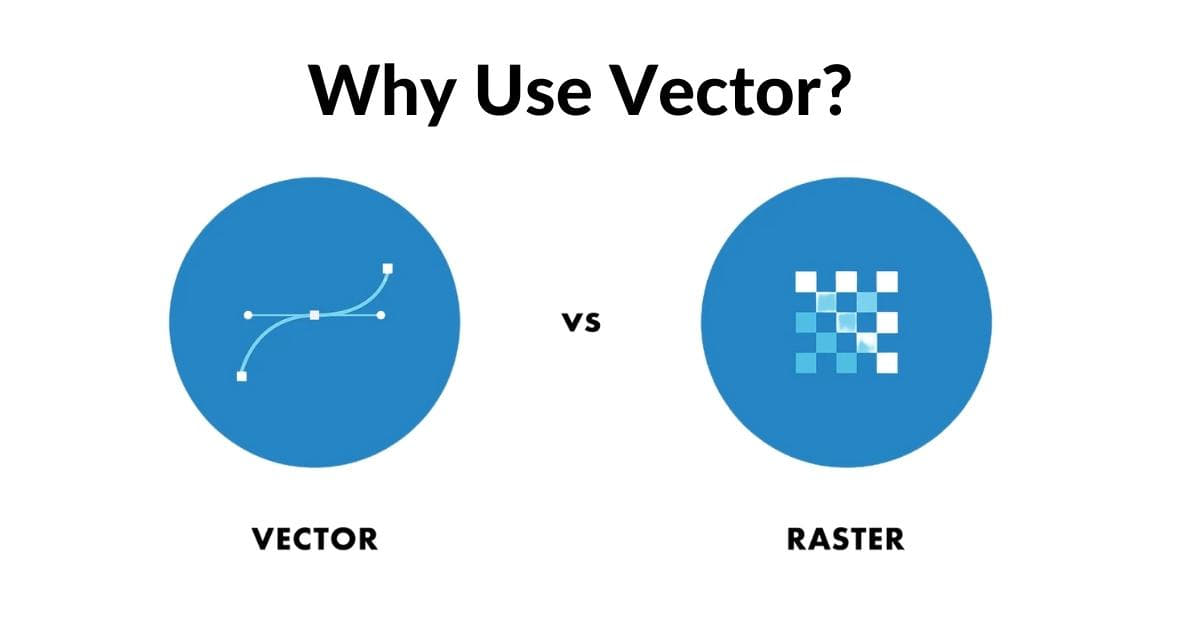In the world of digital graphics and design, the choice between vector and raster images is a critical decision that can significantly impact the quality and versatility of your projects. Understanding why you should use vector images instead of raster is essential for graphic designers, illustrators, and anyone working with digital graphics. In this article, we’ll delve into the advantages of vector images, provide practical insights, and answer some frequently asked questions to help you make informed choices for your creative endeavors.
The Power of Vector Graphics
Unlock the world of design possibilities with the inherent power of vector graphics. These versatile digital assets redefine precision, scalability, and creativity in the realm of visual art.
1. Scalability
One of the primary advantages of vector graphics is their scalability. Vector images are created using mathematical equations, which means they can be resized to any dimension without any loss of quality. Whether you’re working on a small icon or a billboard-sized poster, vector graphics can adapt effortlessly.
2. Crisp and Clean Edges
Unlike raster images, which are made up of pixels and can become pixelated when resized, vector graphics maintain crisp and clean edges at any size. This feature is invaluable for logos, icons, and other graphics that require precision.
3. Small File Sizes
Vector images have smaller file sizes compared to their raster counterparts. This not only saves storage space but also allows for faster loading times on websites and applications. Smaller file sizes are especially important in today’s digital world, where speed and efficiency are key.
4. Easy Editing
Vector graphics are highly editable. Designers can easily modify colors, shapes, and other elements without compromising quality. This flexibility simplifies the design process and enables quick revisions.
5. Versatility
Vector graphics are versatile and can be used for a wide range of applications, from logos and icons to illustrations and typography. They adapt to various media, making them suitable for print, web, mobile apps, and more.
6. Infinitely Zoomable
Vector graphics can be zoomed in infinitely without losing quality. This feature is invaluable when you need to focus on specific details in an image.
Raster vs. Vector: When to Choose
It’s important to note that raster images have their own strengths, particularly in areas where detailed textures and shading are essential. Photographs, for example, are typically better suited to raster formats, as they excel at capturing nuances in color and texture.
However, in most design and illustration scenarios, vector graphics offer numerous advantages that outweigh those of raster images. The key is to select the appropriate format based on the project’s requirements.
FAQs
1. Can I convert a raster image into a vector image?
Yes, you can convert raster images to vector format using software like Adobe Illustrator or online tools like Vector Magic. However, the quality of the conversion depends on the complexity of the image, and manual adjustments are often needed for the best results.
2. What software is best for creating vector graphics?
Popular software for creating vector graphics includes Adobe Illustrator, CorelDRAW, Inkscape (a free and open-source option), and Affinity Designer. These programs offer a wide range of tools and features for vector-based design.
3. Are vector graphics suitable for web design?
Yes, vector graphics are suitable for web design. They have smaller file sizes, which contribute to faster loading times, and they can adapt seamlessly to different screen sizes and resolutions. Vector icons and logos are commonly used in web design for their versatility and crispness.
4. Can vector graphics be used for 3D modeling?
Vector graphics are not typically used for 3D modeling, as 3D modeling requires a different approach and specialized software. Vector graphics excel in 2D design and illustration, while 3D modeling involves creating three-dimensional objects and scenes.
Conclusion
In the world of graphic design and digital illustration, understanding the strengths of vector graphics is crucial. Their scalability, crisp edges, small file sizes, easy editing capabilities, versatility, and infinite zoomability make them a go-to choice for a wide range of creative projects. While raster images have their place, vector graphics offer numerous advantages that can elevate your designs to a whole new level. Make an informed choice based on your project’s specific needs, and harness the power of vector graphics to create stunning visuals.
With these insights, you’re better equipped to navigate the world of digital graphics and make choices that will enhance the quality of your creative work. Happy designing!
This page was last edited on 22 February 2024, at 5:43 pm
